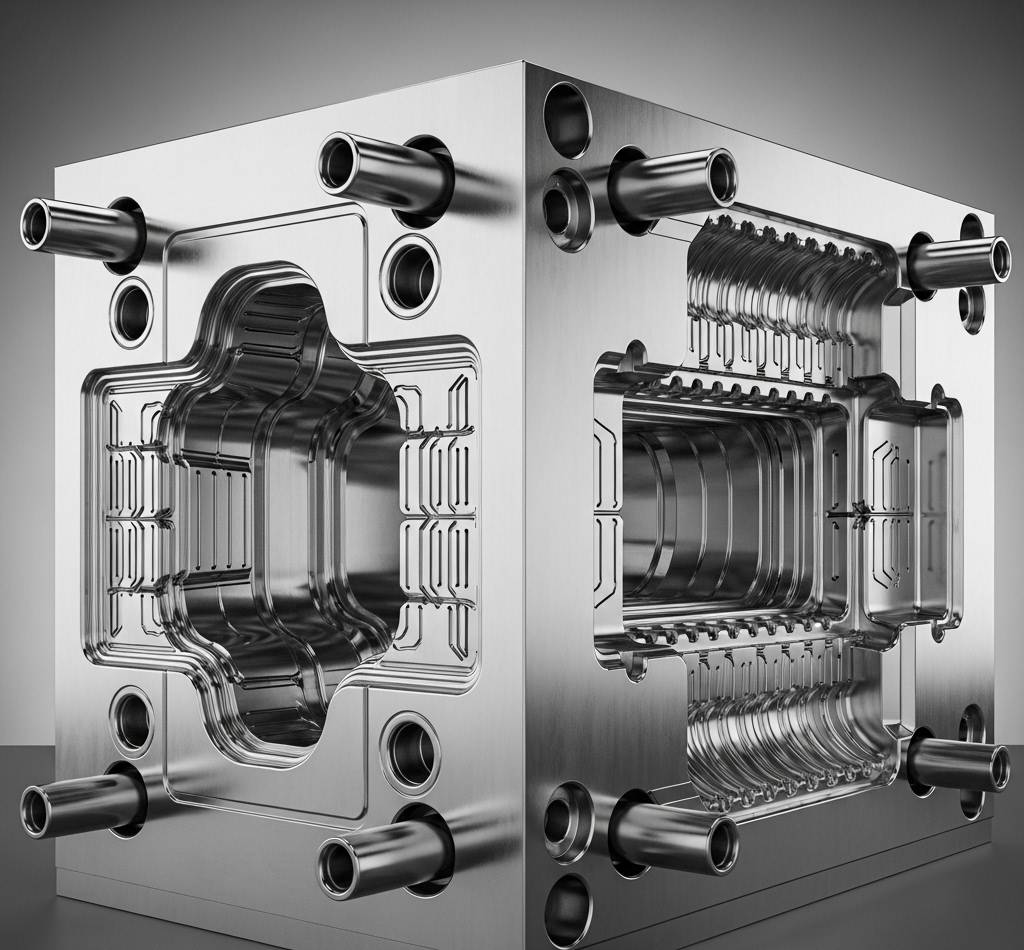
Plastic molding plants operate in a fast-paced, high-demand environment where efficiency and cost-effectiveness are critical. Managing inventory effectively and implementing just-in-time (JIT) procurement strategies can significantly enhance operational performance, reduce waste, and improve profitability. This blog post explores best practices for inventory management and JIT procurement in plastic molding plants, offering actionable insights for plant managers and supply chain professionals.
Effective inventory management ensures that plastic molding plants maintain optimal stock levels of raw materials, work-in-progress (WIP), and finished goods. Poor inventory practices can lead to overstocking, which ties up capital and storage space, or understocking, which risks production delays and missed customer deadlines. Key challenges in plastic molding include:
Diverse Material Requirements: Plastic molding involves various resins, additives, and colorants, each with specific storage and handling needs.
Fluctuating Demand: Customer orders can vary significantly, making demand forecasting complex.
Shelf-Life Constraints: Some materials, like certain resins, have limited shelf lives, requiring careful inventory rotation.
Implement Inventory Tracking Systems
Use real-time inventory management software to monitor stock levels, track material usage, and forecast demand. Systems like ERP (Enterprise Resource Planning) or WMS (Warehouse Management Systems) can integrate with production schedules to provide accurate data. For example, barcode scanning or RFID technology can streamline tracking of raw materials like polyethylene or polypropylene.
Adopt ABC Analysis
Categorize inventory into A, B, and C groups based on value and usage frequency:
A Items: High-value materials (e.g., specialty resins) requiring tight control.
B Items: Moderate-value materials with regular turnover.
C Items: Low-value, high-volume items like packaging materials.
This approach prioritizes resources and reduces overstocking of low-priority items.
Regular Cycle Counts
Conduct periodic cycle counts to verify inventory accuracy without disrupting production. This helps identify discrepancies early and prevents stockouts or excess inventory.
Optimize Storage Conditions
Store materials in climate-controlled environments to prevent degradation. For instance, hygroscopic resins like nylon absorb moisture, so proper storage with desiccant systems is essential to maintain quality.
Just-in-time procurement focuses on acquiring materials only as they are needed for production, minimizing inventory holding costs and reducing waste. In plastic molding plants, where raw material costs can account for a significant portion of expenses, JIT offers several benefits:
Reduced Storage Costs: Less inventory means lower warehousing and handling expenses.
Improved Cash Flow: Capital is not tied up in excess stock, allowing investment in other areas.
Enhanced Flexibility: JIT enables plants to adapt quickly to changes in customer demand or material specifications.
Build Strong Supplier Relationships
JIT relies on reliable suppliers who can deliver materials on short notice. Establish partnerships with local or regional suppliers to reduce lead times. For example, sourcing resin pellets from a nearby supplier can cut delivery times from weeks to days.
Accurate Demand Forecasting
Use historical data and market trends to predict material needs. Collaborate with customers to understand their order patterns, enabling precise procurement schedules. Advanced analytics tools can improve forecast accuracy by up to 20%, according to industry studies.
Streamline Logistics
Coordinate with suppliers to implement smaller, more frequent deliveries. This reduces inventory levels while ensuring a steady supply of materials. For instance, scheduling daily or weekly deliveries of high-use resins can align with production cycles.
Monitor Supplier Performance
Track supplier reliability through metrics like on-time delivery rates and material quality. Regular audits and performance reviews ensure suppliers meet JIT requirements, minimizing disruptions.
While JIT offers significant advantages, it comes with challenges that plastic molding plants must address:
Supply Chain Disruptions: Global events like material shortages or shipping delays can halt production.
Solution: Maintain a small safety stock of critical materials (e.g., high-demand resins) and diversify supplier sources to mitigate risks.
Production Scheduling Complexity: JIT requires precise coordination between procurement and production.
Solution: Integrate JIT with lean manufacturing principles, using tools like Kanban systems to synchronize material flow with production needs.
Quality Control: Rapid procurement cycles may lead to inconsistent material quality.
Solution: Implement strict quality checks upon material receipt and work with certified suppliers to ensure consistency.
Effective inventory management and just-in-time procurement are critical for plastic molding plants aiming to stay competitive. By leveraging technology, building strong supplier relationships, and aligning procurement with production, plants can reduce costs, minimize waste, and improve operational efficiency. Start by assessing your current inventory practices and exploring JIT opportunities with trusted suppliers to transform your supply chain.
© 2025 Lasso Supply Chain Software LLC
Get instant access to our report on the Top Procurement Trends of 2025 by filling out the form below.

Get instant access to our report on the Top Procurement Trends of 2025.